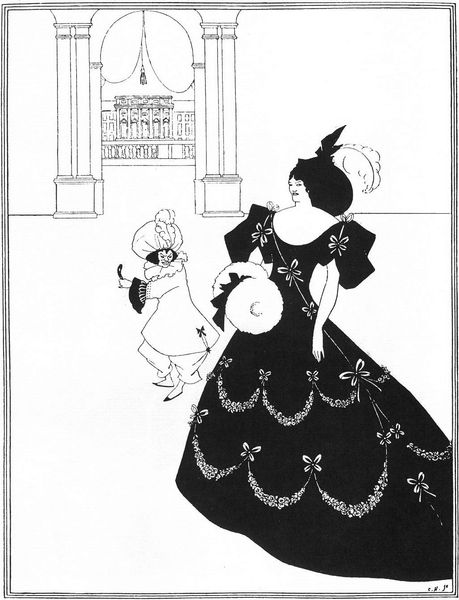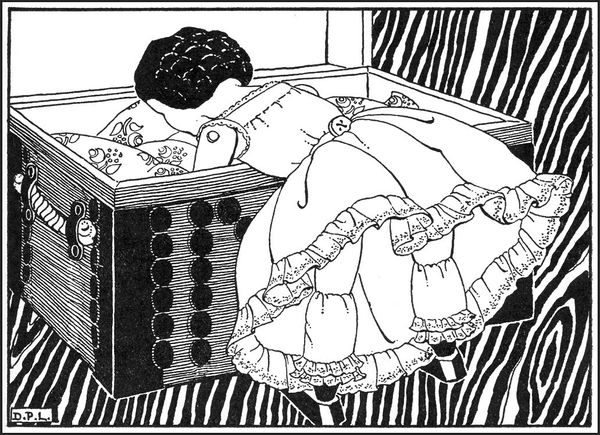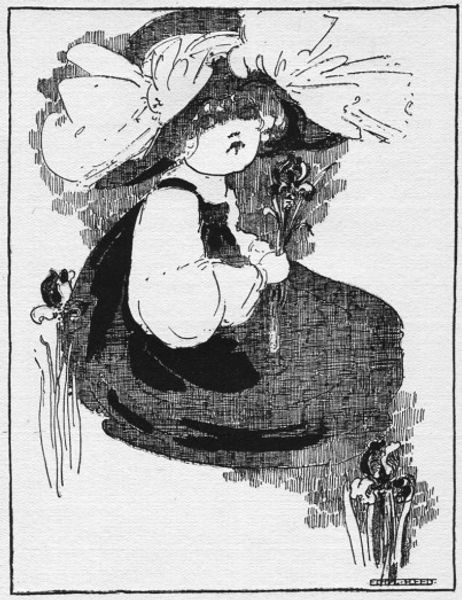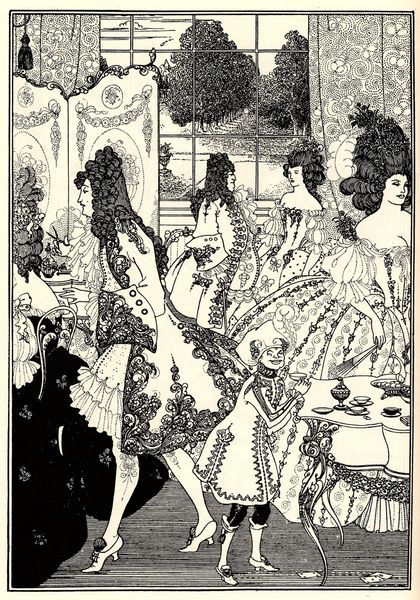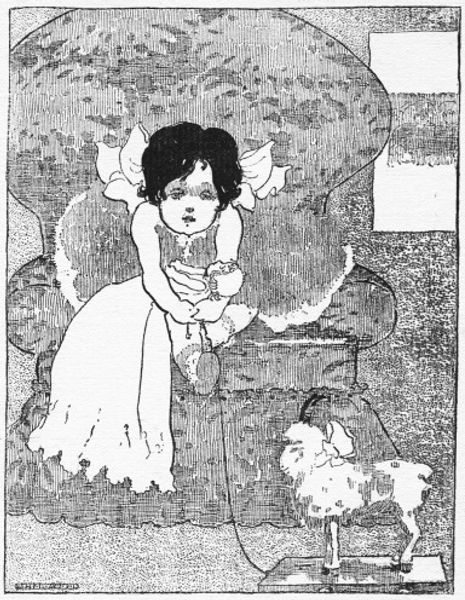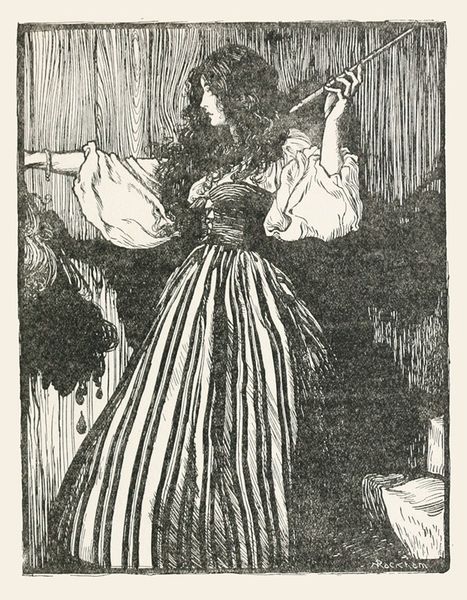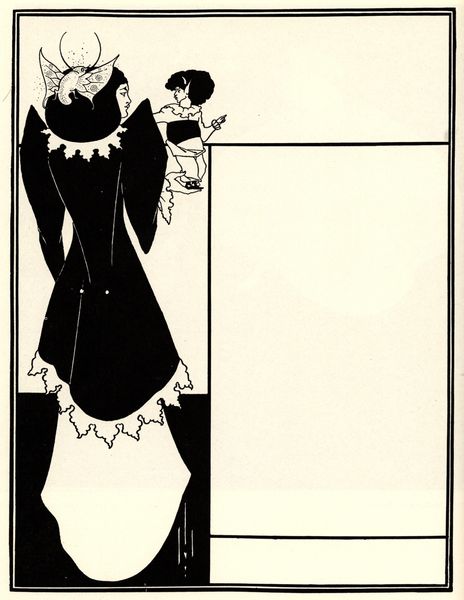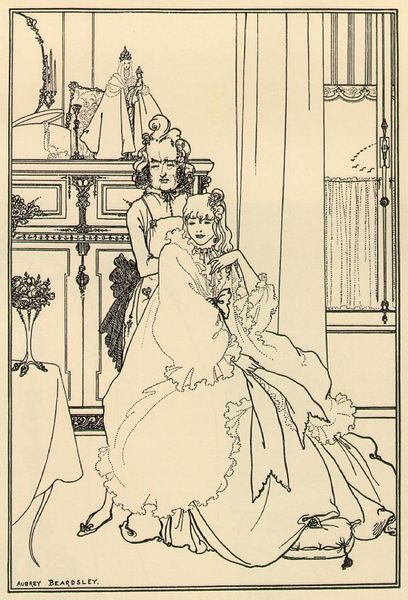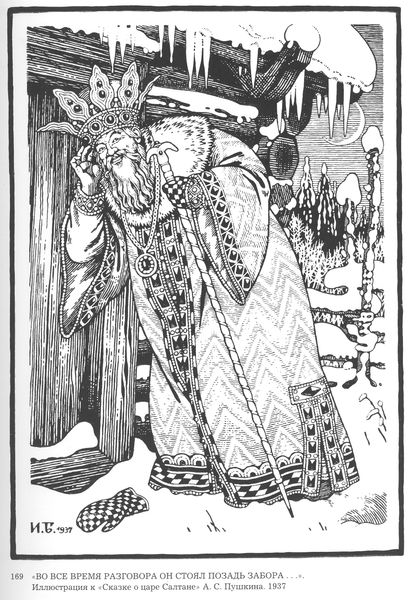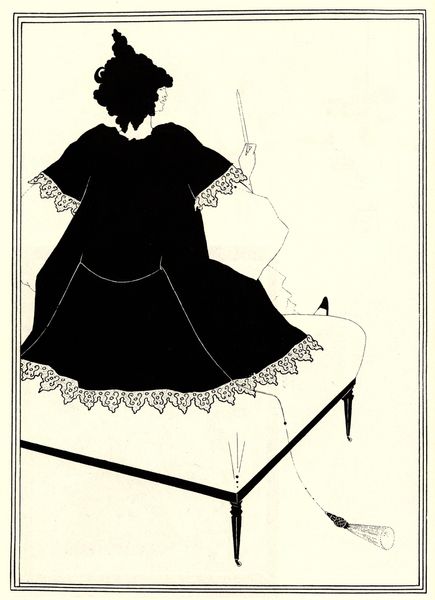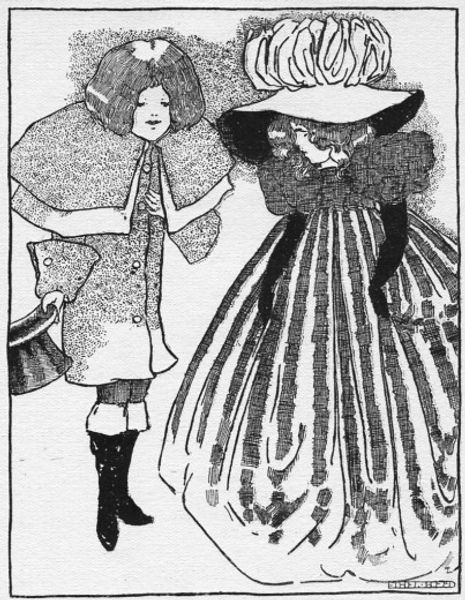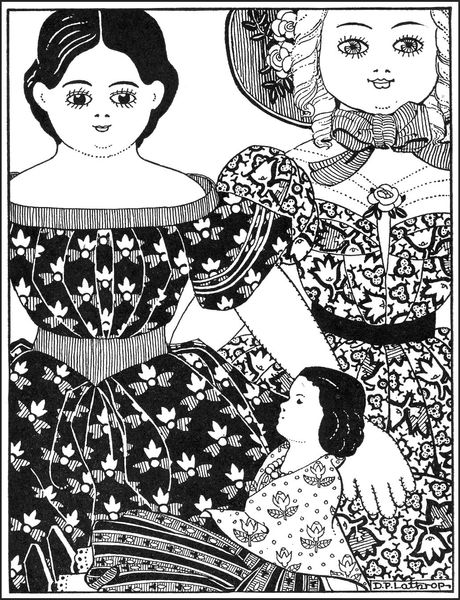
drawing, paper, ink
#
portrait
#
drawing
#
narrative-art
#
figuration
#
paper
#
ink
#
line
#
miniature
Copyright: Dorothy Lathrop,Fair Use
Curator: Here we have "HITTY by Rachel Field 19," an ink drawing on paper created by Dorothy Lathrop in 1929. My first impression is one of captivating miniature theater! It feels so precise and delicate, yet full of implied movement and drama. Editor: The stippling creates an interesting texture in contrast to the solid blocks of ink used for the shadow. The way that the labor is visible in the details of the doll's dress and even in the candle suggests a world built entirely by hand. How do you think this piece engages with art of its time? Curator: In the late 1920s, illustration, especially for children's literature, experienced significant appreciation. Lathrop's work reflects a growing movement to create art that not only entertains but also cultivates imagination and a sense of wonder. It sits within a narrative tradition but also elevated to a position of artistic value, escaping being just "for kids". Editor: Agreed, I think seeing the hand of the artist is crucial here. Even with the doll, what we read as quaint feels more calculated. It appears to question the societal pressures surrounding material possession, even the mass manufacture of doll dresses—it makes the labour of creation so visible. Curator: Absolutely, and consider the light – not simply a tool for illumination, but a symbol loaded with cultural weight. The candle next to the figure offers an almost theatrical spotlight, a beacon of creativity perhaps. Lathrop challenges the prevailing formal conventions while embracing storytelling potential. It emphasizes the human role in crafting meaning through images. Editor: Exactly. It draws my attention back to materiality, which is what speaks to me: how it's built through small acts of construction with limited resources. It gives new significance to everyday tasks such as textile design as its own craft and form of production, in terms of both artwork and garment! Curator: It leaves me considering the socio-cultural importance of visual storytelling and narrative-art in culture and what they reveal. Editor: While for me, I'm left thinking about the artist as someone engaged directly with manual practices within broader production structures, imbuing her creation with social meaning beyond just her artistic statement.
Comments
No comments
Be the first to comment and join the conversation on the ultimate creative platform.
